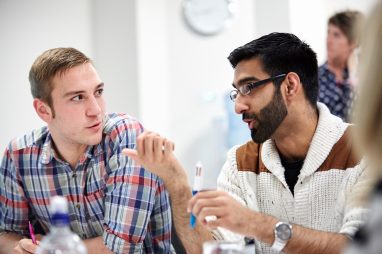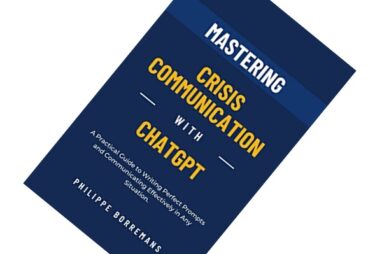History tells us AI will raise the bar for PR
Fail to embrace it and risk being left behind
About the author
Henry Ainslie prepared this article as part of a CIPR Professional PR Diploma assignment while studying with PR Academy.


Much has been speculated about the impact AI will have on PR and communications, and if history has taught us anything, it’s that the new technology will completely change what is expected from the industry.
Yet despite developments in AI dominating business and news agendas across almost all industries, research carried out by the PRCA in early 2023 found that more than half of PR professionals have never used the technology. What’s more, one quarter say they never will.
Why – when the tools have the potential to revolutionise so much of the industry – are PR professionals apparently so reluctant to adopt the use of AI?
PRCA Deputy Director General Renna Markson said earlier this year that the rapid expansion of AI tools presents ‘immediate opportunities and risks for public relations’ but added agency leaders ‘have work to do to elevate their understanding of AI and its inevitable impact on communications practice’.
History suggests they need to do so quickly, or risk being left behind as early adopters seize the initiative.
In his 2014 book Sapiens: A Brief History of Humankind, historian and philosopher Yuval Noah Harari discussed how advances in technology have shaped society and the work we do for centuries.
Writing allowed information to be stored and transmitted over time; postal services meant communications could bridge distances. Modern technology – such as the telephone and email – increased the ease and speed of communication.
These advances were supposed to make our lives easier by enabling work to be done in a fraction of the time. The reality however, as Harari explained, was the elevation of what is expected from working people.
When once someone was happy to wait a week for a response to a letter, email meant action was expected that day. Now, instant messaging and platforms such as Slack, Microsoft Teams, or Trello mean the expectation is now within minutes – if not instantaneously.
New tech always raises the bar of possibilities and subsequently expectation. It means organisations – including PR agencies, communications departments, and consultants – must evolve and elevate their output to match the latest advance’s capabilities or inevitably fall behind those early adopters.
The same will happen in PR and communications as AI develops. We will all be expected to raise our game and reach new levels of service previously not thought possible.
When Open AI unveiled the latest iteration of Chat GPT in November 2022, it immediately set human minds racing on how this latest advance would change the way business is done across all industries – including PR and communications.
With the capability to research in seconds what could take a human hours, days, or in some cases weeks to carry out, and even to create entire pieces of edit-ready content in seconds, concerns have developed into fears for the future of PR practitioners and the industry as we know it. The tech has been described as a risk to jobs, billing structuresv, and in some cases even the necessity for third party PR professionals at all.
Flash back 15 years or so, and similar concerns were voiced of the death knell social media and digitisation would sound for traditional PR and communications.
Organisations now had a direct line to audiences, and audiences means and method of communicating in the other direction – turning an age-old dynamic on its head and leaving media and PR professionals scrapping to work out where they’d fit in.
Writing in 2014, former Downing Street director of communications Alastair Campbell quoted football manager Arsene Wenger’s assertion that social media had transformed society from the vertical to the horizontal, where respect for authority had diminished with everybody now able to question every decision via social mediai.
However, the new capabilities of the developing platforms – and the shift in dynamic and demand they brought – didn’t create threats to PR and communications, it presented opportunities. At least for those willing to adopt and embrace the technology.
Quoted in John Lloyd and Laura Toogood’s 2015 publication Journalism and PR: News Media and Public Relations, Alan Biggar, of communications consultancy Jericho Chambers, explained how developments in social media presented ‘a huge opportunity to engage directly with the stakeholders rather than producing an over- packaged product’, changing the decades old dynamic where ‘the media world was very different and – about the PR and journalist only’.
Speaking in the context of a major organisation, he said: “Shareholders want to hear directly from the company and offering an integrated PR approach is vital”.
The impact of these developments helped the PR and communications industry evolve. A study conducted by Cision UK with Canterbury Christ Church University in 2015 found 82% of UK PR professionals surveyed thought social media had changed the work they did to some extent. Almost 70% said social media had created a new layer of work for them, but despite this, 64% of respondents said social media had improved their productivity.
The study also highlighted how digital and social media had sped up media and communications – largely driven by the shortening life span of stories in an age where consumers demand instant news – and changed long-established behaviours of PR professionals. Just 8% of PRs surveyed said they still met journalists face-to- face, with social media quickly catching up as a preferred way to communicate with journalists.
As Marketing Week observed in a discussion of the findings amongst PR professionals on LinkedIn, social media was simply another channel, rather than a replacement for PR: “In the same way that the arrival of radio didn’t destroy newspapers or TV didn’t destroy radio, neither will social media be the replacement for all our communications activity.”
Communications operations that took steps to understand and adopt the new channels early had a head start on competition, and practitioners that drove the discipline forward were rewarded.
In the same way digital and social media developments sparked the last evolution PR and communications, AI is already driving the next. ‘How’ is the subject of debate.
When discussing the impact AI may have on the media in the Reuters Institute earlier this year, Professor Charlie Beckett, head of the London School of Economics (LSE) Journalism AI Research Project, said the purpose of AI should not be automate content production – but to augment it.
Some media organisations, such as UK regional news publisher Newsquest, are already piloting AI generated content, even creating a new role to oversee and monitor content. On the face of it, the need for a human oversight of AI-created content stems from considerations around trust, ethics, and authenticity, and goes someway to addressing it. However, it would be naive to ignore the cost-saving potential in replacing content creators with AI, particularly against a backdrop of job cuts across the media.
The risk AI poses traditional PR and communications roles is a source of nervousness in this industry too, with moves to replace content creation functions already in progress.
The PR software platform Muck Rack has launched a Chat GPT-powered service that creates AI-generated press material, even sourcing journalists that may be interested in running those stories. It’s easy to see why some are worried.
How effectively AI can produce quality PR content is a key question, although even early incarnations of the technology have shown ‘promise’.
A 2021 study conducted by firms BuzzStream and Fractl to gauge whether Open AI’s earlier GPT 3 Text Generator could write more effectively than PR specialists found more than 62% of 500 media and PR professionals surveyed thought the tech produced a better pitch than the last one they wrote or received. Almost 80% said they’d respond based on the subject lines – and that was using technology that has already been surpassed.
Yet despite advances post Chat GPT and the consequent proliferation of AI generated content and outreach, journalists still frequently complain of AI generated press releases and pitches containing inaccurate and even wholly fabricated information.
New York Times journalist Kashmir Hill complained on Twitter earlier this year after receiving an AI-generated pitch expressing admiration for a book she did not write, and which does not exist. ‘Beware of AI hallucinations, early adopters!’, she tweeted.
Even a quick search of Twitter at time of writing revealed a raft of other complaints, including calls for an ‘AI bot to battle the AI PR pitch bots’.
And here lies one of the biggest issues. AI may be able to write passable pitches and press releases – and up to 60% of PR firms have already done so according to Muck Rack research – but if the tech is relied upon too heavily to create content in its entirety, without sufficient checks and balances, then its effectiveness as a legitimate PR function is undermined.
Beckett suggests the most effective use of AI for media professionals – and by extension PR practitioners – is to help them work more efficiently.
“AI is not about the total automation of content production from start to finish: it is about augmentation to give professionals and creatives the tools to work faster, freeing them up to spend more time on what humans do best,” he said.
“Human journalism is also full of flaws, and we mitigate the risks through editing. The same applies to AI. Make sure you understand the tools you are using and the risks. Don’t expect too much of the tech,” he added.
This is how AI will quickly propel PR and communications into to its next era – by cutting out the industry’s inefficiencies and allowing the best professionals to focus on the specialist experience and attributes they bring to the table.
AI will almost certainly make some roles within the PR and communications industry redundant, as we’ll see in other industries too, but that will place a greater premium on high-tariff human talents – judgement, experience, and true creativity – as well as providing more freedom to perform them.
AI cannot, for example, create a company specific crisis strategy. It does not have decades of experience in crisis situations to draw on. AI does not understand the nuance of a ‘risk to both sides’ judgement call.
What’s more, in the same way the development of digital and social media created new roles, functions, and possibilities within PR, the same will be necessary for AI. New jobs will replace those lost, and the evolution will continue.
To repeat Beckett’s assertion, ‘we should not expect too much of the tech’ that at present can mimic human behaviours but cannot necessarily replicate them. But what happens at it develops?
Writing in the Economist more recently, Harari warned unregulated AI could ‘destroy society’ if it’s allowed develop the capability to manipulate language and tell stories in the same way humans have for centuries – what he describes as ‘the operating system of our civilisation’.
The first steps towards that regulation of AI must come from a fuller understanding of the tech and how it can be used effectively and responsibly in communications, and practitioners – as gatekeepers to storytelling – have an important role to play.
The age of AI is here, and it will drive the next iteration of PR and communications.
While 80% of respondents to that PRCA survey accepted AI is important to the future of PR, too many are still waiting for early adopters to navigate the uncharted waters, and that must change.
The communicators and PR practitioners who do invest in understanding and integrating AI into their operation ethically, inclusively, and sustainably, have the best chance of securing their futures, and that of the industry.
This article was researched and written by a human. AI was used to create the main image.


